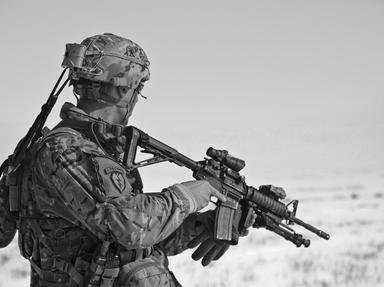Quiz Answer Key and Fun Facts
1. The NSU Kleines Kettenkraftrad was originally conceived as a prime mover for use by which branch of Nazi Germany's armed forces?
2. This Panzer I has been fitted with a large fixed superstructure. In which role were models of this specific type, the Panzerbefehlswagen, employed?
3. The name given to the material forming distinctive ridges on the exterior of this vehicle was 'Zimmerit'. What was the purpose of this material?
4. This vehicle became one of the most terrifying sights on the battlefield, its 100mm thick frontal armour making it virtually impervious to all allied anti-tank weapons in a frontal assault. Which 'big cat' is this?
5. The M14/40 was employed against the allied forces during the early years of the war. Which German ally designed and produced this vehicle?
6. This ubiquitous vehicle chassis provided the base for a range of vehicles including tank destroyers, recovery vehicles, self propelled artillery and anti-aircraft weapons. Which vehicle is this?
7. This vehicle, which first appeared on the battlefield in 1944, was based on the Panzer V 'Panther' chassis. By which name was this vehicle known?
8. Fast, agile, lightly armed and lightly armoured, the 'Luchs' was an evolution of the earlier Panzer II. For which role was the 'Luchs' designed and ideally suited?
9. This image shows the full production version of the Tiger II bearing the turret number red '104'. This number signifies that this particular vehicle was commanded by a troop leader?
10. Fielding the most powerful main armament of any vehicle of the war, the Jagdtiger was capable of destroying any allied tank at ranges in excess of 2500 metres. With what calibre weapon was the Jagdtiger armed?
Source: Author
SisterSeagull
This quiz was reviewed by FunTrivia editor
stedman before going online.
Any errors found in FunTrivia content are routinely corrected through our feedback system.
